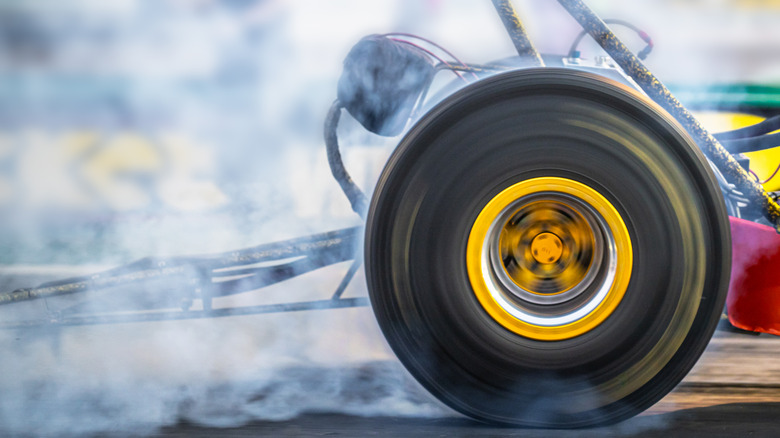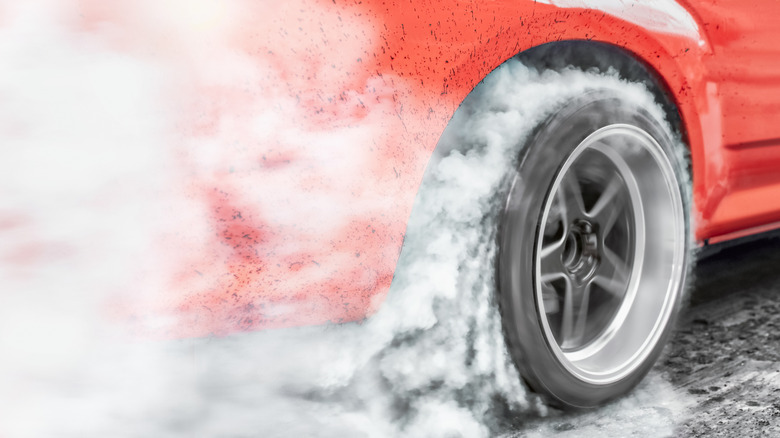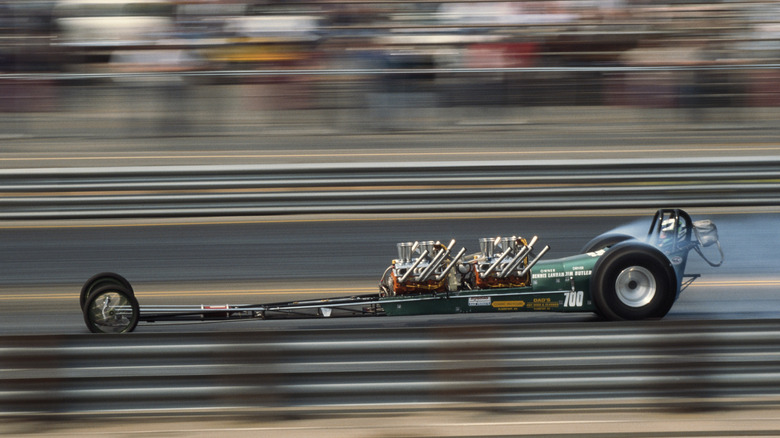Why Are Drag Strip Race Tracks Sticky?
Drag strips are typically quarter-mile long strips of tarmac, in which car enthusiasts and adrenaline junkies alike will drive flat-out in order to see who can cover the distance in the shortest amount of time possible.
The sport started to take off during the 1940s on airfields, which were fairly abundant during the second World War, before the first commercial drag strip was opened in 1950, in Santa Ana, California. The sport soon garnered national and even international interest, as evidenced by the smattering of both old and new drag strips which still exist to this day. While the technologies present in drag racing, both on the track and for the cars, have improved dramatically since the sport's early days, back then, the strip was nothing more than a straight piece of tarmac. Drivers sought to improve performance in any way possible, and it wasn't long before modifications began not just to their cars, but to the tracks also.
Take a closer look at the substance used to increase traction on drag strips
During the 1960s and '70s, traction-enhancing preparations began to take place on the strip itself, with racers and organizers applying layers of rosin – pine tree resin. Rosin is a sticky substance which would coat the track and improve the traction for drivers, meaning they could more easily launch their cars with reduced spin and increased grip, thus reducing their times.
Soon after, a substance called VHT became the norm to use — a water-like resin which could be sprayed with ease onto a drag strip, with the same traction-enhancing properties as rosin.
VHT was a product initially created by the Sperex Corporation as a high-temperature coating for NASA. Once the properties of VHT became known within the racing community, it got widespread use in a number of motorsport applications, such as oval racing and drag racing.
At the tail end of the 1980s, P.J. Harvey purchased VHT and began marketing it under an entirely new name — PJ1 Trackbite. This is the product still used to this day on drag strips, with the main purpose continuing to be improving the traction of racers.
PJ1 Trackbite: Pros and cons of the industry standard traction-enhancing substance
There are a number of key benefits which make PJ1 Trackbite ideal for racing, chief among which is the fact it's naturally rain resistant. This doesn't mean that you can apply it once and forget about it, as with continued and heavy exposure to water, it will wash away, but light-to-moderate rain will simply run off it.
It's also super easy to apply. The first step is to ensure the track is cleaned and prepared properly. Once the track is ready, PJ1 Trackbite can simply be sprayed on. When initially sprayed and cold, PJ1 Trackbite isn't all that sticky — when heat is applied though, via a tire-spinning dragster, then it becomes incredibly tacky, and thus improves grip.
The product isn't perfect, though. Like many substances which aren't water-soluble, PJ1 Trackbite is soluble in oil, so any small leaks from cars will lead to spots on the strip which have reduced grip, and are therefore best avoided by drivers. While this might not have a massive effect on street-tuned cars, a hugely powerful top fuel dragster could easily lose control if it comes into contact with a bare section of track while completing a run.
The product will also lift off the track when rubber is laid down aggressively. The spinning of a car's tires results in small pieces of rubber being left behind, and these small pieces of rubber will lift the PJ1 Trackbite off the surface, which is why drag strips are continuously being cleaned and prepared by track staff and race crews.


